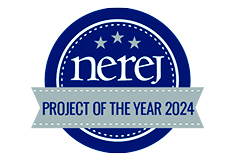News: Spotlights
Posted: June 11, 2009
Geothermal Heating and Cooling - More Than A Hole In the Ground!
Geothermal systems use the earth as an energy source/sink to significantly improve the efficiency of heating and cooling systems. Properly designed and constructed systems can reduce energy costs and carbon emissions by 40 to 70 percent. While geothermal systems have been around for almost 100 years, the science of how the subsurface thermal transfer works is poorly understood leading to poor performance in many major commercial systems installed to date. Commercial buildings have unique heating and cooling demands that require the well field to be designed by qualified professionals who understand how the geochemistry, bedrock geology, hydrogeology and subsurface heat transfer mechanisms will impact system performance. By understanding site specific parameters, site constraints, building loads and permitting regulations, a qualified design professional can evaluate the appropriate type of well field and design an efficient system. Based on the current lack of understanding of subsurface heat transfer mechanisms, a pilot test program to evaluate key design parameters, including thermal conductive testing, should be performed as part of the design of commercial geothermal heating and cooling systems.
Kevin Stetson, P.E. is a senior project manager with SHA located in Westford, MA.
Tags:
Spotlights
MORE FROM Spotlights
The New England Real Estate Journal presents the First Annual Project of the Year Award! Vote today!
The New England Real Estate proud to showcase the remarkable projects that have graced the cover and center spread of NEREJ this year, all made possible by the collaboration of outstanding project teams. Now, it's time to recognize the top project of 2024, and we need your vote!

Quick Hits







